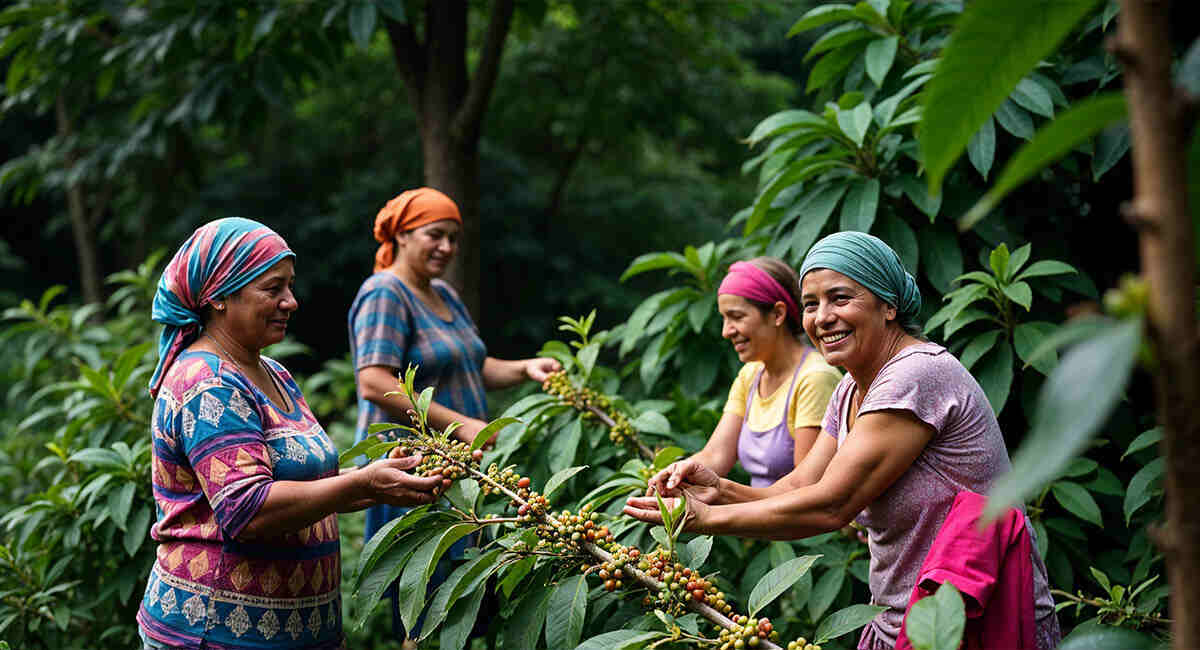Coffee Plantations in Odisha
When one thinks of coffee, the first places that typically come to mind are the famous plantations of Coorg, Chikmagalur, or Kerala. However, India’s coffee culture has a rich contributor: Odisha. Situated in the eastern part of the country, Odisha’s coffee plantations are steadily emerging as a key player in the Indian coffee industry, offering a unique and delightful experience for both coffee connoisseurs and casual drinkers. This blog examines the burgeoning coffee culture in Odisha, its plantations, and the region’s significant contribution to India’s expanding coffee industry.
Coffee Region of Odisha
Odisha, traditionally known for its ancient temples, pristine beaches, and rich cultural heritage, may not seem like an obvious choice for coffee cultivation. However, the state’s hilly terrains, favorable tropical climate, and high-altitude regions offer ideal conditions for coffee production. While the coffee plantations in Odisha are not as vast or widespread as those in Karnataka or Tamil Nadu, the coffee-growing regions in districts such as Koraput, Kandhamal, and Gajapati have gained recognition for their premium Arabica and Robusta coffee beans.
These districts, with their rich biodiversity and a mix of indigenous tribal communities, are increasingly becoming popular for coffee cultivation. Odisha’s distinctive geographic location and varied environment give coffee beans a unique flavor.
History of Coffee Cultivation in Odisha
The history of coffee in Odisha is relatively recent compared to other Indian states. While the British introduced coffee to India in the 17th century, coffee cultivation did not take root in Odisha until the early 20th century. The 1950s marked the establishment of the state’s first coffee plantation, and over the years, the number of coffee estates has steadily increased.
Today, the state is home to several small- and medium-scale coffee plantations, most of which are managed by local farmers and tribal communities. Farmers in Odisha primarily grow organic coffee, following traditional and eco-friendly cultivation practices passed down through generations.
Unique Growing Conditions
What makes Odisha’s coffee plantations so special is their unique growing conditions. The state’s varied altitude, ranging from 600 to 1,200 meters above sea level, provides an ideal environment for growing Arabica and Robusta coffee beans. The highland regions’ cold, foggy mornings and warm, sunny afternoons offer perfect growing conditions for beans, ultimately developing a well-rounded flavor profile.
In addition to the favorable altitude and climate, Odisha’s coffee plantations benefit from rich, volcanic soils that are rich in nutrients. These soils, combined with the monsoon rains and the dry season, contribute to the beans’ robust and distinctive flavor.
Coffee Varieties in Odisha
Odisha’s coffee plantations predominantly grow two varieties: Arabica and Robusta.
- Arabica Coffee: Renowned for its smooth texture and mild flavor, Arabica beans grown in Odisha possess a distinctive profile. They often exhibit bright acidity, floral notes, and a medium body, with undertones of fruits and spices. The cooler climate in districts like Koraput and Kandhamal supports the cultivation of high-quality Arabica beans.
- Robusta Coffee: Robusta beans, conversely, are known for their stronger flavor and higher caffeine content. These beans are more bitter and full-bodied, with earthy and woody notes. Robusta plays a central role in the coffee-growing regions of Odisha, as farmers typically grow it at lower elevations due to its higher disease resistance.
Farmers grow both varieties organically, using minimal chemicals, which appeals to an increasing number of health-conscious coffee drinkers and those seeking sustainable options.
The Role of Tribal Communities
One of the most interesting aspects of Odisha’s coffee plantations is the involvement of the indigenous tribal communities. In districts like Kandhamal and Gajapati, coffee cultivation is not only an economic activity but also a way of life. The tribal farmers practice traditional methods of coffee farming, which are deeply rooted in the region’s culture. To keep the coffee plants healthy, these individuals use organic farming methods, avoiding chemical pesticides and fertilizers, and relying on traditional wisdom.
Coffee lovers can purchase premium, organic coffee from these tribal farmers and help preserve the distinctive farming methods passed down through generations. These communities can also maintain their socio-economic independence while contributing to the global coffee supply chain.
Coffee Tourism in Odisha
In recent years, Odisha’s coffee plantations have begun to attract both local and international tourists. Coffee tourism is gaining popularity as visitors seek to experience the process of coffee cultivation firsthand. Numerous farms in Odisha provide guided excursions that let guests explore verdant coffee grounds, discover how coffee is harvested, and even get their hands dirty picking coffee cherries.
These tours often include visiting local tribal villages, where tourists can immerse themselves in Odisha’s rich cultural heritage. Some plantations also have cafes on-site, where visitors can sample freshly brewed coffee from the beans grown on the estate. This unique blend of nature, culture, and coffee makes Odisha a captivating destination for coffee enthusiasts.
Final Thoughts
Odisha’s coffee plantations, though still relatively young, have immense potential. The state is a hidden gem in India’s coffee landscape due to its ideal growing conditions, rich cultural heritage, and commitment to organic cultivation. As more coffee lovers discover the unique flavors of Odisha’s beans, the region stands ready to become a major player in the Indian coffee industry. Odisha’s coffee farms offer a fantastic experience that combines nature, culture, and, of course, the finest coffee, whether you’re a coffee enthusiast or a tourist seeking an unusual place to visit.


